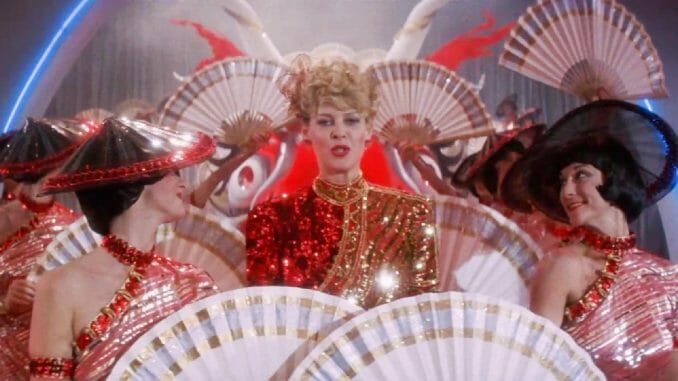How West Side Story Pays Off Steven Spielberg’s History of Near-Musicals

The new remake of West Side Story has something most movie musicals don’t: Absolute technical assurance behind the camera. Since the musical has re-asserted itself in American cinemas, a group of filmmakers, usually with backgrounds in theater or choreography, have become go-to directors for the genre: Your Rob Marshalls, your Adam Shankmans, your Bill Condons. Once in a while, someone like Jon M. Chu will prove especially adept and exciting; more often, new musicals languish somewhere between clunky stagebound presentation and senseless editing, a worst-of-both-worlds approach that’s distressingly common. The 2021 West Side Story, though, moves with uncommon grace: Bodies cut across the street with fierce energy; the camera moves with them without getting lost in a frenzy; color and shadow dance together as beautifully as the talented performers. Who is this young buck behind the camera, bursting on the scene to school filmmakers with far more experience in this tricky artform? Why, it’s septuagenarian Steven Spielberg!
It shouldn’t be surprising that Spielberg, one of the most talented American filmmakers working, has an affinity for this genre, just as he’s worked in sci-fi, action-adventure, historical drama and war movies with similar verve and aplomb. It is strange, though, that Spielberg’s long-spoken desire to make a musical has taken so long to produce an actual result. Even stranger, he’s come close to making a musical multiple times—and not just behind the scenes. Sometimes he’s expressed his interest in plain view.
For example: Would Spielberg’s notoriously ill-received 1941 have worked as a musical? Maybe not; it might well have retained the moments where its spectacle turns lugubrious, straining and burdening the comedy that’s supposed to hold it up. On the other hand, while it’s uneven as a comedy, 1941 is a marvel of choreography. Its best sequence is a slapstick chase across and around a dance floor at a USO club—a splashy and exuberant number that manages to feel a little subversive (its hero is impersonating a soldier, barging into the narrative of a noble officer taking his best girl out on the town) and causes a full-blown riot. Spielberg would repeat the trick a few years later in another one of his less-beloved films: The opening of Indiana Jones and the Temple of Doom is another production number chased with slapstick, as a nightclub performance of “Anything Goes” gives way to a sequence where a poisoned Indy (Harrison Ford) pursues an antidote across a dance floor. In this case, the dancing and the mayhem are kept separate, but they’re still juxtaposed via the score and the many bodies in motion.
As it happens, his version of West Side Story opens much the same way: With pursuits and conflicts between the Jets and the Sharks that are part balletic dance and part kinetic confrontation. Rather than shying away from the Jerome Robbins dance-fighting that might risk looking silly to contemporary audiences, Spielberg amps up both the dancing and the fighting; the remake is more violent than the original without losing its beauty. If anything, its physicality is more exhilarating, the camera whipping around the gangs with muscular grace. The dance at a local gym where Maria (Rachel Zegler) and Tony (Ansel Elgort) first meet feels a bit like that 1941 sequence, as exuberant couples and hostility twine together inextricably. It’s a less comic version, even more vivid in visualizing pent-up aggression and how it can be released by young people throwing themselves into dance—or squaring up for a rumble.
-

-

-

-

-

-

-

-

-

-

-

-

-

-

-

-

-

-

-

-

-

-

-

-

-

-

-

-

-

-

-

-

-

-

-

-

-

-

-

-








































